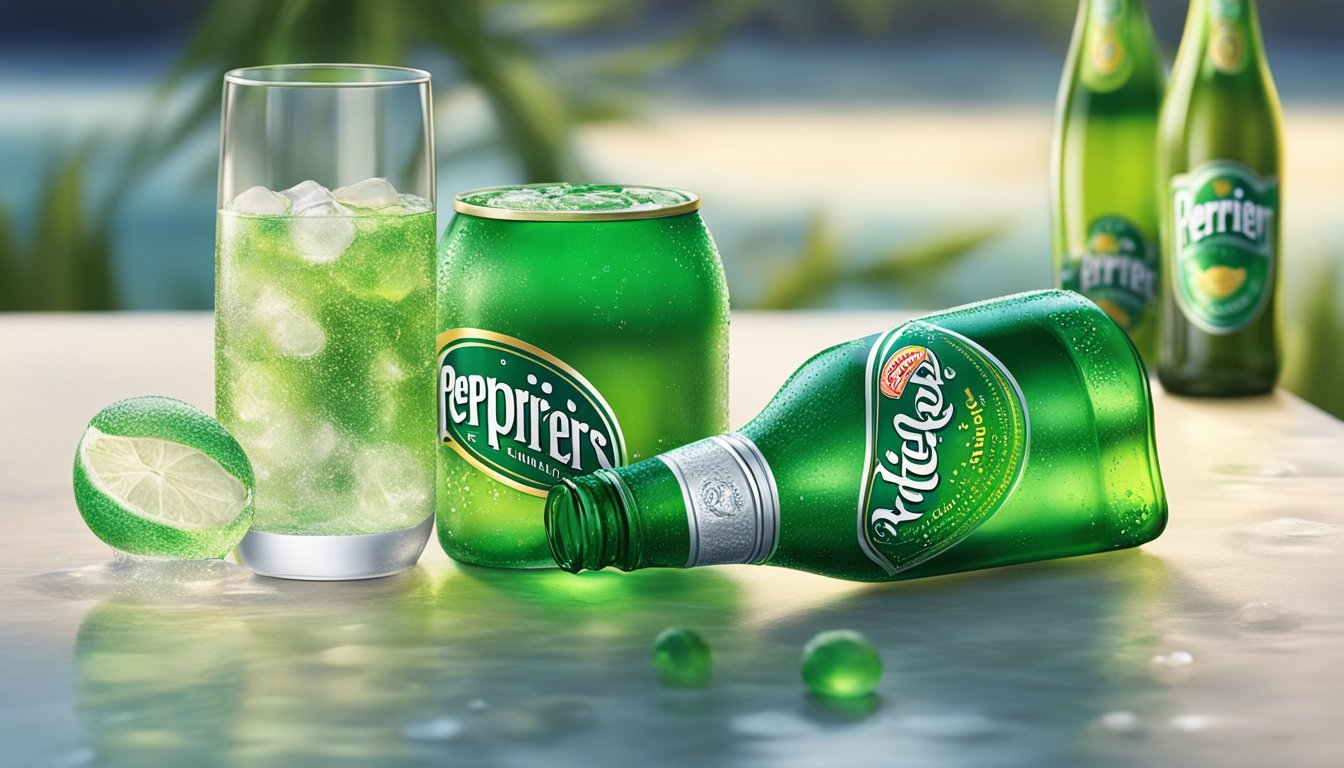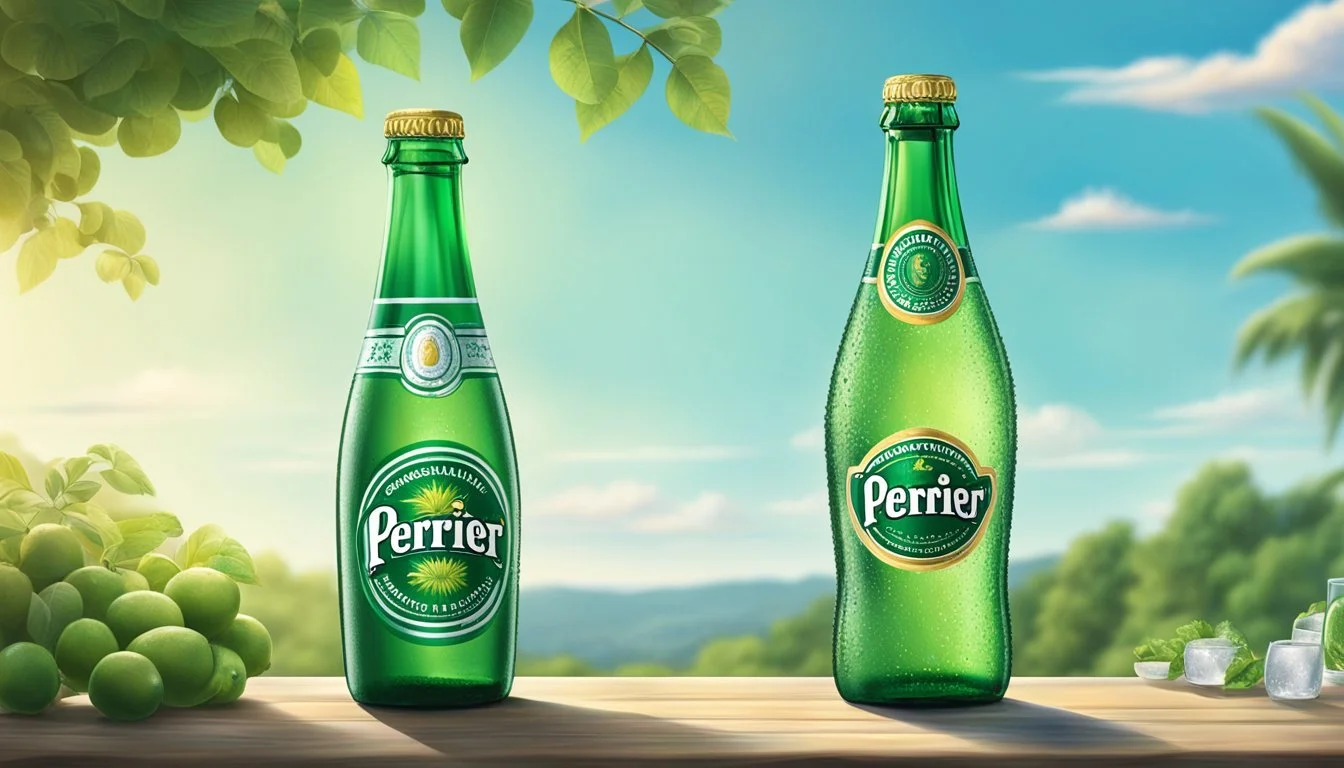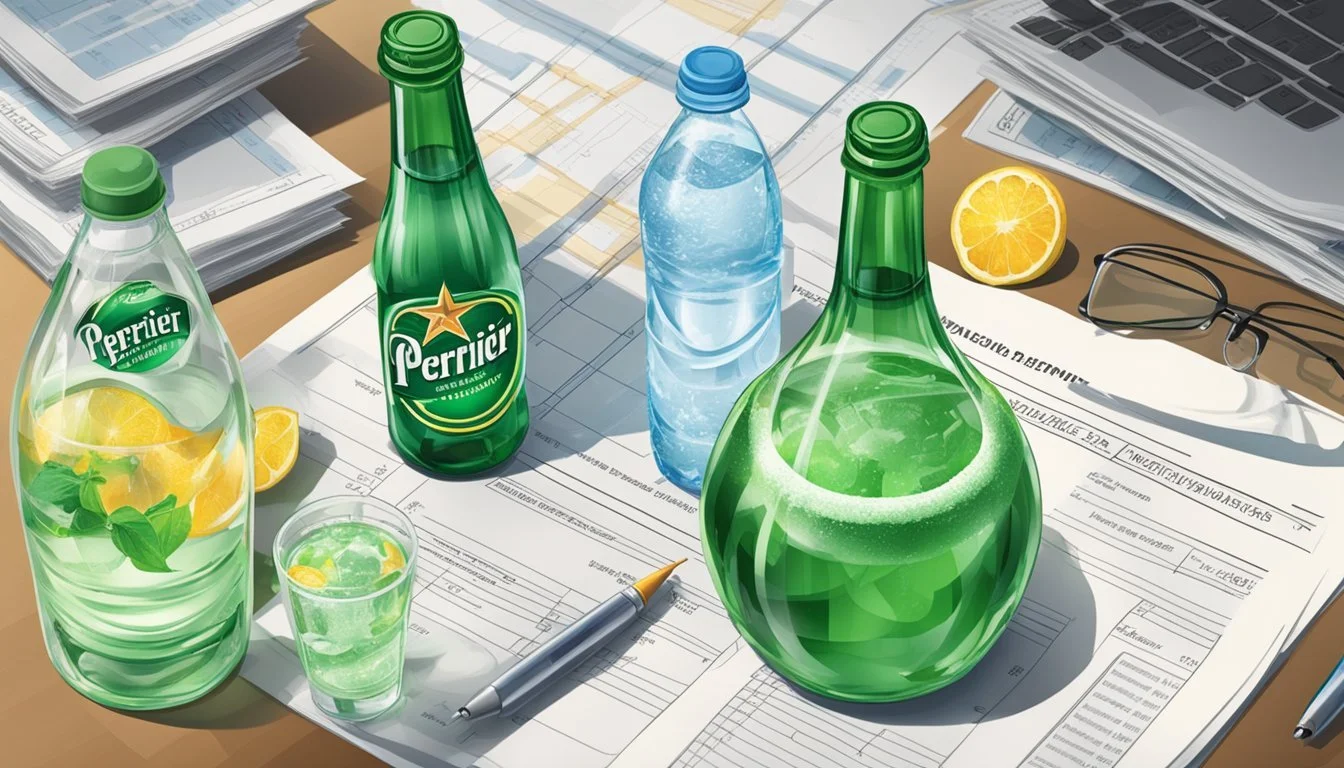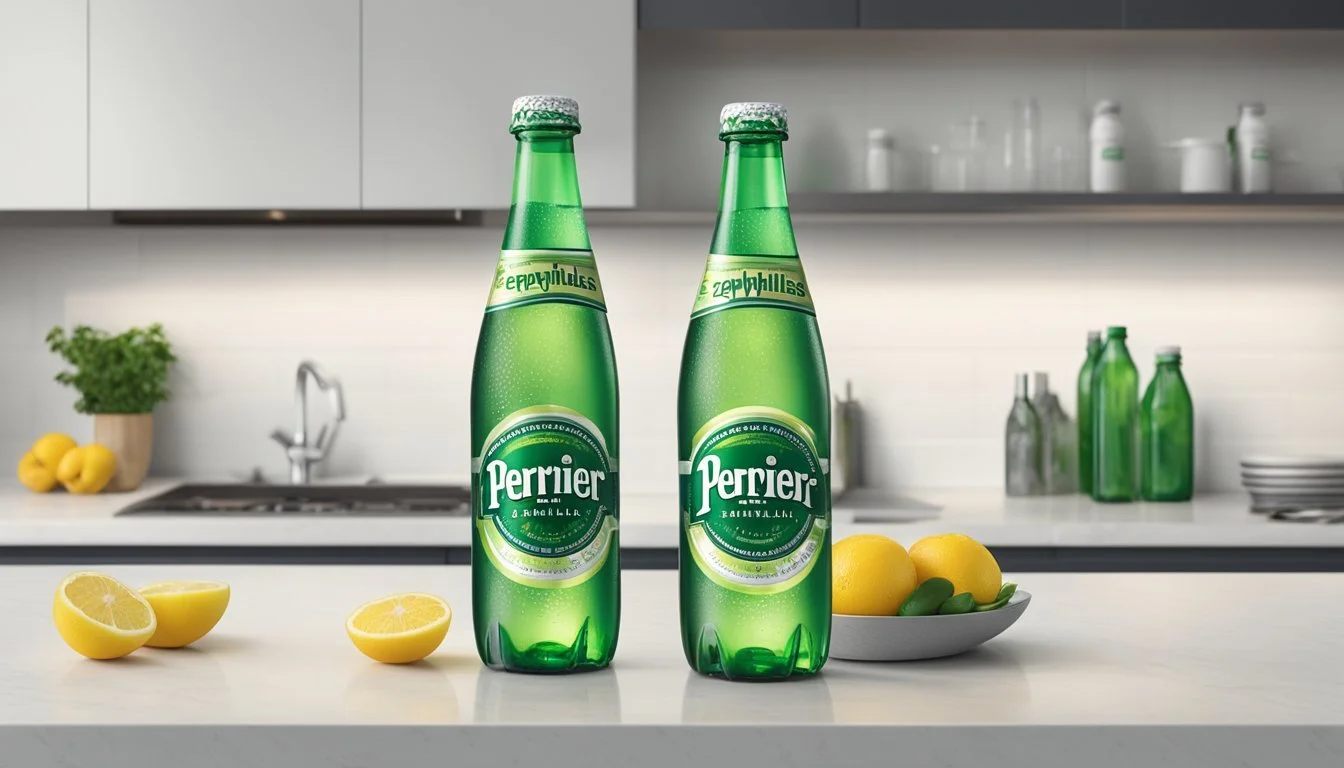Perrier vs. Zephyrhills
A Comprehensive Comparison of Bottled Water Brands
In the world of bottled water, the discussion often boils down to taste, source, and the process of purification. Perrier and Zephyrhills represent two distinct categories within this vast market. Perrier, a French brand, is synonymous with its naturally carbonated mineral water sourced from the South of France. Versatility is one of its strong suits, with the beverage often served both in daily hydration and as a sophisticated mixer in social settings.
On the other hand, Zephyrhills is a brand steeped in the American spring water tradition. With its sources tucked in the idyllic countryside of Florida, Zephyrhills is often praised for its taste and natural purity. Consumers perceive it as a straightforward choice for everyday refreshment—untouched, it comes from carefully selected springs.
Comparing Perrier and Zephyrhills requires more than a surface-level assessment, as both brands boast unique backgrounds, processes, and consumer loyalties. As sparkling mineral water and still spring water stand apart in the market, their differences highlight distinct features that cater to varied preferences and occasions. The conversation around which water is better is not only about personal taste but also about understanding the nuances that define their quality and branding.
The Battle of Brands
In the crowded field of bottled water, Perrier and Zephyrhills are two brands that have carved out distinct identities. They cater to different preferences, but how do they stack up against the market's other popular brands?
Perrier Overview
Perrier is synonymous with carbonated mineral water. Sourced from the Vergèze spring in the south of France, Perrier is known for its iconic green bottle and distinctive bubbles. It offers a crisp taste experience that often serves as the benchmark for sparkling water, with a product lineup that spins off into various flavors and sizes to cater to a global clientele.
Zephyrhills Overview
In contrast, Zephyrhills is a brand associated with non-carbonated spring water. Hailing from the crystal springs of Florida, Zephyrhills prides itself on delivering natural, pure water without any additives. The brand has built a loyal following in the southeastern United States with a focus on regional sourcing and sustainable practices.
Comparing Other Popular Brands
When juxtaposed with other brands, Perrier and Zephyrhills are each formidable in their respective categories, yet they are part of a larger narrative in the bottled water market dominated by diversity and consumer choice. A brief comparison indicates:
Aquafina and Dasani are giants, focusing on purified water and a wide distribution network, often becoming the default choice in many retail and vending locations.
Poland Spring shares a regional affinity with Zephyrhills, revered in the northeast for its spring water.
Essentia pushes the envelope on ionized alkaline water, showing a technical approach to pH balancing.
Evian parallels Perrier's French legacy but embraces still water, often marketed towards premium consumers.
Fiji stands out with artesian water sourced from tropical islands, with a taste profile and bottle design that resonate with status and quality.
Smartwater blurs the lines with vapor-distilled water and added electrolytes, aiming for a value proposition centered on taste and hydration.
Each brand's strategic position reflects a deep understanding of consumer preferences, pivoting on factors such as source, taste, and lifestyle alignment. They collectively span a spectrum that is as much about personal choice as it is about hydration.
Understanding Bottled Water
When choosing between different brands of bottled water, consumers often weigh factors such as taste, source, and mineral content. Two popular brands highlight this choice: Perrier, known for its sparkling mineral water, and Zephyrhills, which offers natural spring water.
Types of Bottled Water
Bottled water takes several forms, each distinguished by its source and treatment:
Spring Water: Collected from a natural spring, this water flows to the earth's surface from an underground formation.
Mineral Water: Originates from a protected underground water source and contains a consistent level of trace minerals, which must remain unaltered.
Sparkling Water: Infused with carbon dioxide under pressure—naturally occurring or added—to create effervescence.
Purified Water: Typically sourced from municipal supplies and treated to remove impurities and chemicals, making it safe for consumption.
Mountain Spring Water: Similar to natural spring water, but specifically sourced from mountain springs.
Sourcing and Originality
The source of bottled water can define its taste and purity:
Spring Water: Comes from natural springs, either from the mountain or the ground, and retains its natural minerals.
Mineral Water: Must be sourced from a well or spring with a natural mineral content that remains consistent and tact.
Purified Water: May originate from any source but undergoes purification processes like reverse osmosis or distillation.
Groundwater: Sourced from water beneath the earth's surface which has percolated through soil layers and can serve as the source for certain types of bottled water.
Each type of water offers a unique profile of taste and mineral content, driven by its sourcing and originality. For example, a consumer seeking the crisp taste of carbonation might prefer Perrier, a sparkling water that is sourced from a spring in France with its natural effervescence and minerals. Conversely, one might choose Zephyrhills for its pure, mild flavor derived from Florida's natural springs.
Taste Profile
In the realm of bottled water, the aspects of taste, mineral content, and carbonation are paramount in distinguishing one brand from another. The following subsections delve into how the taste of Perrier and Zephyrhills is determined, what taste test outcomes suggest, and the natural composition's influence on the taste.
Determining Taste
Taste is a subjective sensation, yet it can be assessed through structured evaluation. Experts like sommeliers approach water tasting with a refined palate, noting the subtleties in flavor that may come from the mineral content and level of carbonation. The mineral content, such as calcium, magnesium, and sodium, can significantly influence the perception of taste, introducing a sense of minerality to the water.
Taste Test Outcomes
In a comparative taste test between Perrier and Zephyrhills, several points emerge:
Perrier: Known for its distinct carbonation, Perrier has a sharp effervescence and a crisp taste that can enhance its overall flavor profile. The mineral content contributes to its characteristic taste, often described as a balance between freshness and a light salty hint.
Zephyrhills: Less carbonated than Perrier, Zephyrhills is often characterized by its clean and pure taste. The mineral content here is more subdued, offering a milder taste that may appeal to those preferring a more natural water profile.
Natural Composition Influencing Taste
The source of bottled water plays a crucial role in its final taste. Perrier's taste is enriched by the carbonation naturally occurring in the spring, coupled with the minerals from the rock through which the water percolates. Conversely, Zephyrhills is sourced from various springs in Florida, and its taste reflects the composition of the aquifers, arguably imparting a softer, more neutral taste due to its less pronounced mineral composition.
Health and Hydration
When comparing Perrier and Zephyrhills bottled waters, it is important to focus on hydration benefits, the balance of electrolytes and minerals, and health considerations to make an informed choice.
Hydration Benefits
Both Perrier and Zephyrhills provide essential hydration. Perrier, a sparkling mineral water, offers a unique hydrating experience with its carbonated bubbles, which can make the act of drinking water more enjoyable for some, potentially encouraging increased fluid intake. Zephyrhills, a still spring water, can be equally hydrating and is preferred by those who enjoy non-carbonated water.
Electrolytes and Mineral Balance
Bottled water can be a source of various minerals and electrolytes, though the content will vary by brand and source.
Perrier: The mineral content in Perrier includes calcium, magnesium, and trace amounts of other electrolytes, such as sodium and potassium.
Mineral Content in Perrier Calcium Moderate Magnesium Moderate Sodium Low, under 10mg per liter Potassium Trace amounts
Zephyrhills: It also provides a range of minerals, although the specific concentrations depend on the particular spring from which the water is sourced.
Mineral Content in Zephyrhills Calcium Varies by source Magnesium Varies by source Sodium Generally low Potassium Varies by source
The naturally occurring mineral content in both options can help maintain electrolyte balance, which is crucial for many body functions.
Health Considerations
Perrier and Zephyrhills are both considered to be healthy hydration choices with minor differences:
Perrier: While the carbonation in Perrier does not diminish its hydrating ability, some individuals may find that it causes bloating or discomfort, particularly those with sensitive digestive systems.
Zephyrhills: As a still water, it is unlikely to cause such issues and is universally well-tolerated.
Minerals such as calcium and magnesium contribute to bone health, while potassium is essential for muscle function. The low sodium content of both waters makes them suitable for individuals on a low-sodium diet. Neither water is known to contain iron or selenium in significant amounts. It's also worth noting that none of the bottled waters should be relied upon as a sole source of minerals; a balanced diet is always recommended for meeting nutritional needs.
Safety and Regulations
When choosing bottled water, consumers often consider the safety and regulatory adherence of the brands in question. This section explores the aspects of quality control, contamination issues, and compliance with FDA and EPA standards for both Perrier and Zephyrhills.
Quality and Contamination
Perrier and Zephyrhills are committed to maintaining high standards of quality. They both issue quality reports that are accessible to the public.
Perrier: Renowned for its natural carbonation and stringent quality checks.
Contaminants: Consistently tests for a wide range of potential contaminants.
Reports: Offers detailed quality reports that can be downloaded as PDFs from its official website.
Zephyrhills: Sources its water from Florida springs and adheres to quality control procedures.
Contaminants: Like Perrier, it regularly monitors its water for substances that could compromise safety.
Reports: Provides water quality reports, ensuring transparency and accountability.
FDA and EPA Compliance
Both brands must comply with the regulations set forth by the Food and Drug Administration (FDA) and the Environmental Protection Agency (EPA), responsible for the oversight of bottled water standards in the United States.
Perrier:
FDA: It is subject to FDA regulations as a product imported into the United States.
EPA: While the EPA's regulations pertain to tap water, Perrier's source protection and monitoring strategies align with similar safety objectives.
Zephyrhills:
FDA: As a domestic bottled water brand, Zephyrhills follows FDA's regulations for bottled water, which include establishing standards for safety and labeling.
EPA: Although EPA regulates public water systems, Zephyrhills uses these standards as a benchmark for its own water quality.
Environmental Impact and Ethics
When comparing Perrier and Zephyrhills bottled waters, it's important to assess the environmental footprint and the ethical considerations involved in their production and distribution.
Bottled vs. Tap Water
Tap water in the UK, for instance, has been noted to be at least 500 times less expensive than bottled water, reflecting a significant difference in economic impact. Regarding environmental considerations, producing bottled water has a much higher ecological cost compared to tap water, which does not entail intensive packaging or widescale transportation. Water sourcing is also a point of contention, as bottled water companies must extract water from natural resources, potentially affecting local ecosystems and community access to these water sources.
Sustainability Practices of Companies
When evaluating sustainability practices of bottled water companies, one must consider their water sourcing methods, packaging materials, and overall carbon footprint. Perrier, known for its carbonated mineral water, sources from a well in France and has been working towards better environmental practices by improving its bottling facilities and reducing carbon emissions. Zephyrhills sources spring water primarily from Florida and emphasizes its use of recycled materials in packaging and commitment to sustainability programs.
Both companies must balance the demand for bottled water with their impact on natural water resources and the broader environment. Consumers increasingly expect companies to implement eco-friendly practices and be transparent about their environmental stewardship.
Economic Considerations
When considering Perrier and Zephyrhills bottled water, economic aspects such as price, market trends, and consumer purchasing behavior play significant roles in a consumer's decision-making process.
Price Comparison
Perrier is typically positioned as a premium sparkling water brand, and its price reflects that status. Consumers should expect to pay more for Perrier than for Zephyrhills, which is positioned as a more budget-friendly option. A direct comparison often reveals:
Perrier (750 ml): $2 to $3 USD
Zephyrhills (700 ml): $1 to $1.50 USD
Market Trends
The bottled water market is influenced heavily by trends in consumer preferences and environmental discussions. Perrier, as a carbonated mineral water, holds a niche yet stable segment that appeals to consumers looking for a luxury or gourmet product. On the other hand, Zephyrhills is marketed toward everyday consumption, appealing to a broader demographic. Sales figures generally mirror these trends, with Zephyrhills catering to higher volume sales due to its affordability and Perrier being sought after for its distinctive taste and brand prestige.
Consumer Purchasing Behavior
Consumers today are more informed and have shown a preference for products that align with their personal values, such as sustainability and health. Perrier often caters to those seeking a sophisticated drinking experience or as an accompaniment to fine dining. Zephyrhills, being a spring water, is often chosen by consumers for its perceived natural purity and taste, as well as its lower price point, making it a common choice for regular hydration needs. Both brands have their loyal customer bases, who prioritize different aspects of the bottled water they choose to purchase.
Practical Aspects of Consumption
When choosing between bottled water brands like Perrier and Zephyrhills, consumers often consider convenience and the practicality of the packaging. These factors significantly influence the overall experience with the product.
Convenience and Accessibility
Perrier, known for its carbonated mineral water, is a staple in many high-end restaurants and hotels. It is widely available in most grocery stores and is often associated with a premium experience. In contrast, Zephyrhills, a natural spring water popular in the southeastern U.S., is readily accessible in large retail chains and local stores.
For those preferring eco-friendly and innovative solutions, LIFEWTR presents a practical alternative. It is not only widely available but also offers enhanced water in a sleek, artist-designed bottle, blending convenience with an emphasis on design and artistry.
Packaging and Storage
Perrier:
Bottle Sizes: Offers a range of sizes including small glass bottles and larger plastic ones.
Material: Glass bottles for a premium feel, and recyclable plastic options.
Storage: Stores well due to sturdy packaging, especially in glass, which also preserves carbonation.
Zephyrhills:
Bottle Sizes: Available in a wide variety of sizes, from small single-serve bottles to large multi-gallon containers.
Material: Primarily uses plastic, which is lightweight and recyclable.
Boxed Water: While not directly related to Perrier and Zephyrhills, Boxed Water represents a shift in packaging choice:
Material: Uses cartons made from paper, a renewable resource.
Storage: Although less common, the flat-sided cartons can be more space-efficient when storing in bulk.
Both brands offer different packaging options to suit various needs and preferences, whether prioritizing premium appeal, sustainability, or storage convenience.
User Guidance
When choosing between Perrier and Zephyrhills bottled waters, consumers benefit from understanding label details and considering expert selection tips. These guidelines can influence purchasing decisions based on personal preferences for water source, content, and taste.
How to Read Water Labels
Consumers should carefully read the label on bottled water to determine its source and contents. Key information typically includes:
Source: Indicating whether the water comes from springs, wells, or is municipally supplied (e.g., Zephyrhills is known for sourcing from Florida springs while Perrier is a natural sparkling mineral water from France).
Ingredients: Mineral content such as calcium, magnesium, and sodium levels. Perrier, for instance, contains distinctive minerals that contribute to its signature taste.
Signals: Labels can also carry signals like certifications or claims of being "natural," so consumers should understand what these mean and if they are important to them.
Expert Tips for Selection
Experts recommend several tips for consumers when selecting bottled water:
Look for transparency in labeling to understand the full list of ingredients and their sources.
Consider taste preference; some may prefer the crisp mineral taste of Perrier while others may opt for the more neutral profile of Zephyrhills.
Take into account any dietary requirements (e.g., low sodium) and choose a brand accordingly, using the label information as a guide.






